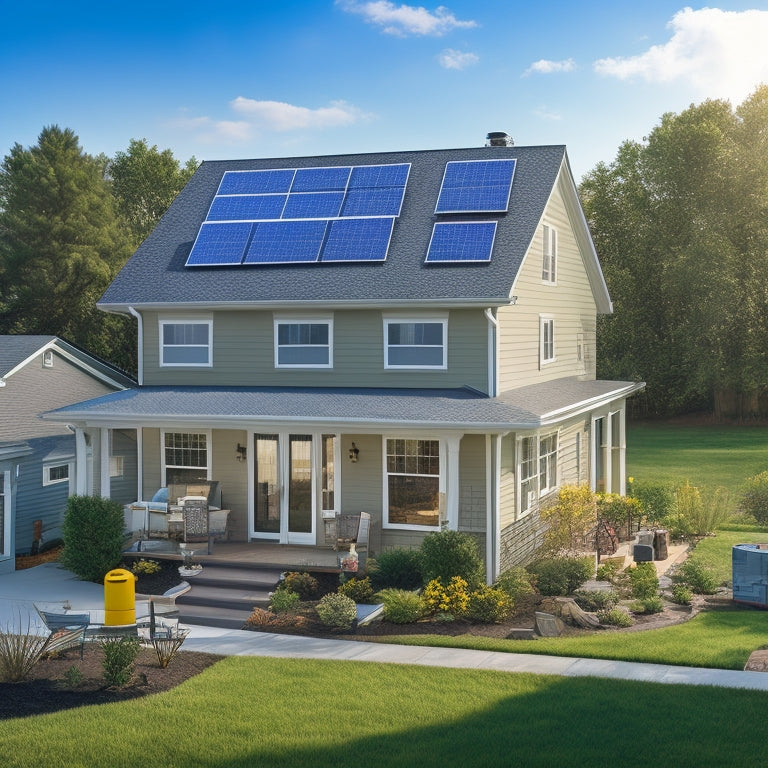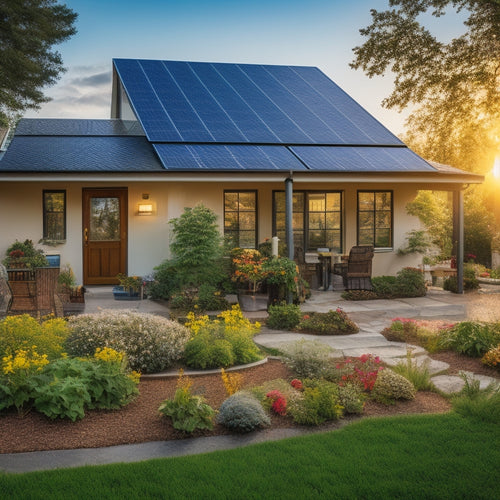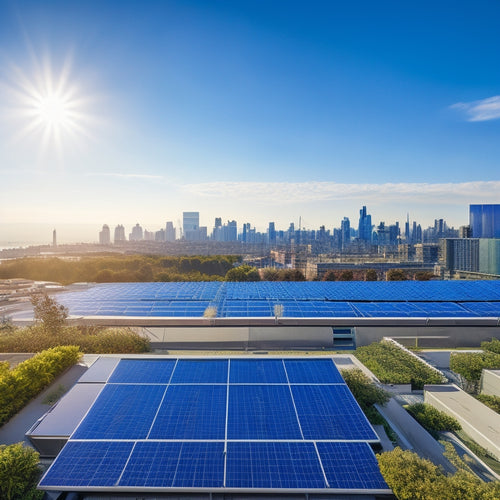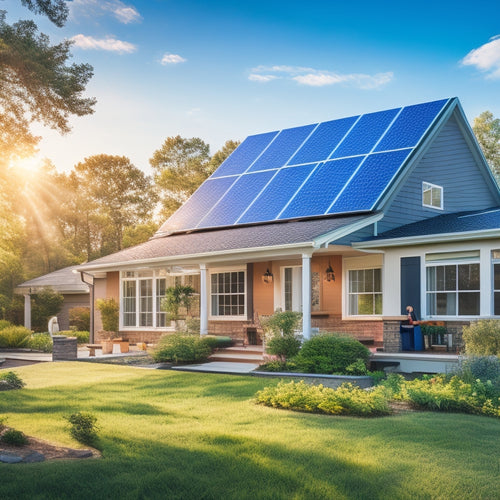
3 Essential Steps for Installing Solar Panels on Your Home
Share
You're about to utilize the power of the sun to generate clean energy for your home, and with these three essential steps, you'll be well on your way to a successful solar panel installation. First, assess your home's suitability by evaluating its solar orientation, energy efficiency, roof size, and shade assessment to determine the best panel configuration. Next, choose the right equipment, including panel type, inverter selection, mounting system, and efficiency ratings to guarantee maximum energy production. Finally, install and connect the panels, configuring the array and inverter connection to convert DC power to AC power - and that's just the beginning of your solar expedition.
Key Takeaways
- Assess your home's suitability for solar panels by evaluating solar orientation, energy efficiency, roof size, and potential shading issues.
- Choose the right equipment, including panel type, inverter, and mounting system, based on your energy needs and budget.
- Ensure proper installation and connection of panels, including secure mounting, optimal orientation, and watertight electrical connections.
- Consider factors like warranty, efficiency ratings, and compatibility when selecting equipment and installing the system.
- Configuring the array and connecting it to the inverter is crucial for efficient energy collection and conversion to usable power.
Assess Your Home's Suitability
Your home's unique characteristics play an important role in determining its suitability for solar panels. The first step in evaluating your home's suitability is to examine its solar orientation.
You'll want to reflect on the direction your roof faces and how much shade it receives. A south-facing roof with minimal shading is ideal, as it receives the most direct sunlight throughout the day.
Next, you'll want to evaluate your energy efficiency. Take a closer look at your energy consumption and identify areas where you can improve.
Upgrading to energy-efficient appliances and lighting can greatly reduce your energy needs, making solar panels a more viable option.
Additionally, reflect on the size and shape of your roof. A larger roof with more surface area can accommodate more solar panels, increasing energy production.
However, a smaller roof can still be suitable if you prioritize energy efficiency. By carefully examining these factors, you can determine whether solar panels are a suitable choice for your home.
Choose the Right Equipment
Since you've determined your home is suitable for solar panels, it's essential to select the right equipment to guarantee peak energy production.
You'll need to choose from various solar panel types, each with its own efficiency rating and benefits. Monocrystalline panels are the most efficient, but also the most expensive. Polycrystalline panels offer a balance between efficiency and cost. Thin-film panels are the most budget-friendly option, but have lower efficiency rates.
When selecting equipment, consider the inverter, which converts DC power from the panels to AC power for your home. Look for a high-efficiency inverter to minimize energy losses.
The mounting system is also vital, as it secures the panels to your roof. Confirm the system is durable and designed for your roof type.
Install and Connect Panels
With your equipment selected, it's time to bring your solar panel system to life. You'll start by mounting the panels on your roof, making sure they're securely fastened and positioned for ideal energy harvesting. Proper panel orientation is essential, as it affects energy output.
You'll want to take into account factors like roof pitch, shading, and local building codes when determining the perfect angle and placement for your panels.
Next, you'll connect the panels in a series to form a string, and then connect multiple strings to create an array. This is where electrical connections come into play.
You'll need to verify that all connections are secure, watertight, and meet local electrical codes. You'll also need to connect the array to an inverter, which converts DC power from the panels to AC power for your home.
Frequently Asked Questions
Will My Homeowner's Association Allow Solar Panel Installation?
You'll need to review your HOA's solar panel regulations to determine if they'll allow installation; if restrictions exist, you may need to obtain HOA approval, so research and prepare a solid case to present to your association.
Can I Install Solar Panels on a Metal Roof?
A million watts of sunshine await! You can definitely install solar panels on a metal roof, leveraging its advantages like durability and ease of installation, but consider unique installation considerations, such as specialized mounting systems and watertight seals, to guarantee a flawless setup.
Do Solar Panels Void My Roof's Warranty?
You're wise to reflect on roof warranty implications; solar installation guidelines vary, but most manufacturers allow solar installations without voiding the warranty, as long as you follow their specific guidelines and guarantee a watertight seal.
How Often Should I Clean My Solar Panels?
You're smart to prioritize solar panel maintenance! Cleaning frequency depends on your location and climate, but as a general rule, you should clean your panels every 6-12 months to guarantee maximum energy production, and more often if you're in a dusty or polluted area.
Are Solar Panels Affected by Shade From Trees or Buildings?
You thought trees and buildings would provide a nice shade for your home, but little did you know they'd be stealing sunlight from your solar panels! Unfortunately, shading impact can markedly reduce solar panel performance, so it's essential to assess and mitigate any obstructions.
Conclusion
You've made it! With these three essential steps, you've bridged the gap between fossil fuels and renewable energy. Now, imagine your home bathed in a warm, eco-friendly glow, its carbon footprint shrinking with each passing day. As the sun rises, your solar panels spring to life, capturing its energy like outstretched arms embracing the dawn. You've taken the first step towards a sustainable future, and the possibilities are endless.
Related Posts
-

How to Achieve Energy Independence at Home
To achieve energy independence at home, start by investing in renewable energy sources like solar panels, wind turbin...
-

Business Solar Investments for Cost-Effective Sustainability
Investing in solar energy is a smart move for your business, providing a solid foundation for cost-effective sustaina...
-

Solar Energy Grants and Incentives for Homeowners
Maneuvering solar energy grants and incentives is essential for reducing your installation costs. You can benefit fro...


